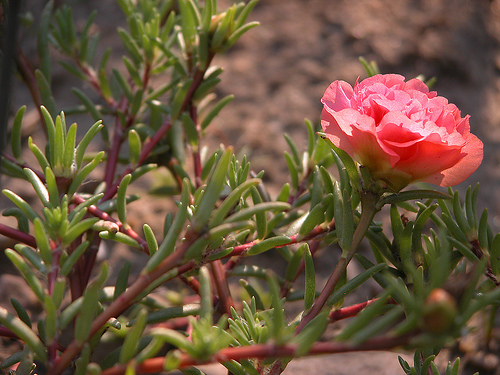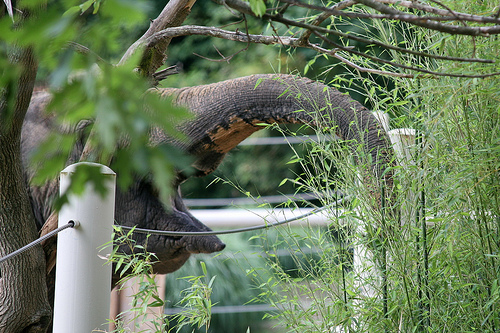As a kid, I was always curious about a plant in our garden called nine o’clock. My father informed that the unusual name popped from the plant’s habit to bloom like clockwork precision at nine o’clock in the morning. And so with clockwork precision myself, every day I would go out in the garden to check if the nine o’clock had indeed bloomed at nine. The flowers of course dutifully obliged. Just like most other flowers in the garden that had their internal clocks attuned to the rising and the setting sun, the summer, the winter and the rain. It took me a while to realise that every nature made thing, whether a flower, a tree, a bee or an animal did not need a mechanical clock or a Gregorian calendar with January to December marked on it to function. It was Mother Nature’s calendar they were following.

But the next question that often came up is more to do with the huge differences between plants and animals. Both are living organisms, but animals see – plants don’t, so how do plants perceive the difference between night and day or bright and dark? How does the nine o’ clock (which is also called Moss rose, Sun plant or scientifically Portulaca grandiflora) come to know the time of day when it has to bloom? The answer to this question has now been given by scientists from the University of Cambridge, Department of Plant Sciences who say it is the sugars that plants produce which also maintain their biological clock.
Sugar Clocks at Work
Plants, like animals, have a 24 hour ‘body-clock’ known as the circadian rhythm. Just as we can perceive the time of day, sometimes not even by looking at the position of the sun, plants can perceive every hour of the day or night because of the sugars they produce.
During photosynthesis – a process where plants convert Sun’s energy to chemicals needed for their growth and functioning, sugars are also produced. It is the level of these sugars that help plants judge the time.
To understand this, the researchers monitored seedlings in a carbon dioxide free environment. Because carbon dioxide gas is needed by plants for photosynthesis, this environment inhibited the process. Therefore, the seedlings also could not produce any sugars and the plant’s biological clock delayed by 2 to 3 hours!
The scientists found the production of sugars regulated key genes responsible for the 24 hour rhythm.
Dr Alex Webb, lead researcher at the University of Cambridge said that the research showed that sugar levels within a plant play a vital role in synchronizing circadian rhythms with its surrounding environment. Dr Mike Haydon, who performed much of the research and is now at the University of York, added that the accumulation of sugar within the plant provides a kind of feedback for the circadian cycle in plants- a bit like resetting a stopwatch.
Haydon believes that the amount of sugar in the plant may be a sign like a fuel level indicator in vehicles. It is a way of telling the plants the amount of energy they have to perform important tasks of the day.
Internal Timekeepers
What the research importantly tells us is that plants do not ‘see’ or perceive the sunlight and then start their morning chores. It is instead, the internal sugar levels and thus the biological clock that informs them that the sun may rise soon and they need to adjust their biology accordingly. This ability to keep time provides an important competitive advantage and is vital in biological processes such as flowering, fragrance emission and leaf movement.

Why the nine o’clock can bloom at nine each morning, is because as per the sugar level inside, the plant knows it’s time to wake up the flowers. Why do leaves of certain plants of the bean family droop down and look like they are sleeping in the evening? Because most probably the sugar levels indicate it is time to give the leaves some rest.
The study was published in journal Nature on October 23rd.
More Related Stories,
Indian tree Species out of Critically Endangered List
Shadow Puppetry Spreading Awareness about Medicinal Plants
Image via cc/Flickr by Carl Lewis and Andreas kay






2 thoughts on “How do Plants Tell the Time of Day?”